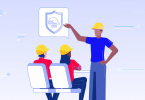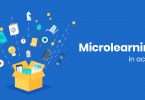This is the one and only tell-tale sign of an eLearning course that is devoid of critical thinking exercises.
Critical thinking can be described as a mental exercise – the capability to think about complex issues or relate learning directly to experience. It improves the problem solving skills of the learner and enhances their decision making capabilities.
Corporate learning courses are required to have such mental exercises in order to improve the value of the eLearning course. Critical thinking skills are required in almost every industrial sector training programs.
Current pedagogy and andragogy research and practices are rife with critical thinking strategies in the learning environment. Educational technology, especially eLearning authoring tools provide a plethora of techniques and ideas to integrate critical thinking.
Hisham Al-Mubaid of University of Houston, penned a paper titled ‘A New Method for Promoting Critical Thinking in Online Education’ in which he discusses an effective method of embedding critical thinking strategies for developing higher order reasoning skills in the eLearning environment.
According to Al Mubaid, critical thinking can be enhanced through two components:
- Individual Component that occurs in an independent and self-paced learning environment. There are three parts in the individual critical thinking component:
- List: In the first step, a learner will have to develop a list of facts or concepts that provide a true definition of the topic in hand. The list depends on the kind of course or content the learner is being trained on.
- Evaluate: the learner evaluates the list of facts created in the first step. This includes ranking and scoring the items in the list as a means of self-evaluation.This process involves a higher level of mental activity as the learner has to get rid of any kind of bias and evaluate the items in the list in a fair manner. While the first step starts the process of conceptualization, application and understanding of the information, the second step kindles critical thinking required for evaluating the assimilated information.
- Re-structure: The third step includes revising and improving the understanding of the concept by restructuring the list as per the evaluation in the second step.This third step requires a high intellectual process where the learner improves upon his or her learning himself through the process of restructuring what he or she had first understood.
- Team-based Component that is best carried out in the peer-based and collaborative learning environment. The team-based component includes three steps:
- List: The first step here is similar to the first step of the individual component, but here the process of listing is done in groups. The students are grouped in teams and each team develops a comprehensive list of concepts or facts describing the chosen topic in the e-course content.The team collects all individual lists and creates one comprehensive list, which is the cumulative understanding of the entire group.
- Discuss: In the second step the team members proceed to evaluate the possible solutions through discussions and debates.
- Evaluate, Integrate & Restructure: In the third step, the learners collectively integrate the ideas and restructure their possible solutions based on the discussions and debates of step two.
In the individual component, especially in a self-paced eLearning environment, the learner is provided with ample opportunities to absorb information. Through traditional drill and practice exercises, knowledge is transferred and tested through quizzes.
The final step in each module is to administer an assignment that takes a relatively longer time to complete. This assignment requires the newly acquired learning to be utilized in different scenarios.
The process of listing newly learned facts is similar to summarizing the main ideas of the module. Then comes evaluating the list and selecting the appropriate idea for the scenario in the assignment.
Finally, restructuring would involve “customizing” the ideas to make it work in the given scenario. Think for example, in the healthcare field, the learner is confident about their indications of various drugs used for controlling blood pressure.
How would the learner apply this knowledge? Provide them clinical scenarios in which different patients have different conditions. The learner is required to prescribe the right drug for the patient and justify their prescriptions.
In group learning, the team-based component comes into play. Learners exchange perspectives with each other through discussion. All participants can view a scenario with a fresh perspective. This creates an in-depth learning experience through critical thinking. Discussion board activities provide opportunities for team-based critical thinking practices.
By keeping the above two components in mind while creating your next eLearning course, you can encourage critical thinking and knowledge application skills in your learners.
ELearning environments are notorious for having a series of information followed by a quiz. This practice may provide temporary satisfaction to the learner when they score well, but may prove to be detrimental when the learner tries to utilize their learning.
Critical thinking skills can be incorporated easily if the eLearning author is aware of the need to apply learning to work context.




